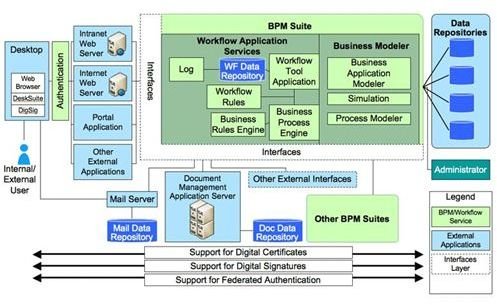Guide to a Business Process Management Diagram
Introduction
Organization that need to implement changes in the way they tackle activities and tasks find it difficult to design, execute, and optimize such activities. However, companies that use the business process management diagram can effectively institute change with ease using this great tool. Therefore, in this article, we define the elements of a business process management (BPM) diagram needed to build one, and provide a sample diagram.
Explanation of Business Process Management
If you are looking for a systematic business approach to improving your company’s business processes, then a business management diagram is a great tool to accomplish this goal. By using a business process management system- organizations are able to use an integrated system of tasks and activities to help their business run effectively and efficiently, especially in changing business conditions. Nonetheless, the central focus of the business process management system is to coordinate activities and processes that would mimic the wants and needs of the customer. Usually companies use business process management to achieve greater customer satisfaction, increased speed at which a product is delivered to the market, and to heighten product quality.
Image Credit: Business Puzzle image by jscreationzs
Elements of the BPM System

There are five essential functions to the BPM model, which are commonly referred to as the “Life Cycle." Moreover, the Life Cycle aids in accomplishing an organization’s goals, with such functions that include:
1. Process Design
Simply, the design stage is used to identify existing processes and to create new processes, if so desired. This stage requires a tremendous amount of accuracy so that complications or problems do not develop due to inefficient process designs–which will most likely not be discovered until the execution stage. Therefore, professionals who develop this system are careful to ensure the flawlessness of the model before implementation. Furthermore, the design of this system usually attempts to improve upon the efficiency of a human-to-system, human-to-human, or system-to-system processes.
2. Modeling
The modeling stage introduces various “what if” scenarios into the equation, along with a combination of proposed variables. In order to determine the outcome of various processes, organizations might introduce a “what if” scenario such as “What if material or inventory cost increased by 20%, will it have an affect on product pricing?”
3. Execution
The next step of the Life Cycle is to purchase or assign a software program that will execute all processes previously designed. Although the software is prepared to accomplish step-by-step directions to accomplish any task, not all tasks can be achieved by the software program. Therefore, human influences are often used when such gaps in achievement exist.
4. Monitoring
Monitoring consists of actively monitoring the outcome of individual processes in order to determine the degree of its effectiveness. For instance, organizations may track the degree at which the product is expeditiously delivered to the customer.
5. Optimization
This process stage is used to analyze all performance information, statistics, and data in order to determine what adjustments need to be made to improve efficiency of the process, if any.
Image Credit: Computer Network image by jscreationzs
Sample Business Process Management Diagram
The business process management diagram example below (click to enlarge) shows how to implement human-to-system activities to aid in enhancement of web-based systems. This sample BPM diagram is provided by the National Institute of Health Enterprise Architecture.

Conclusion
Companies who use the business process management diagram are able to more effectively implement improvements to their daily processes. The BPM diagram is a great way to improve the effectiveness of customer demands and needs so that organizations can compete in an ever-changing market.
References:
- Search Cio - https://searchcio.techtarget.com/definition/business-process-management
- Enterprise Architecture - https://enterprisearchitecture.nih.gov/ArchLib/AT/TA/WorkflowServicePattern.htm
- ACM - https://delivery.acm.org/10.1145/1560000/1558901/p11-ko.pdf?key1=1558901&key2=8347851921&coll=DL&dl=ACM&CFID=374078&CFTOKEN=25619026
